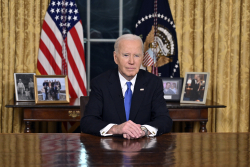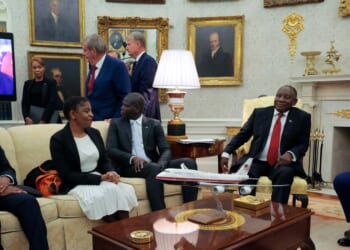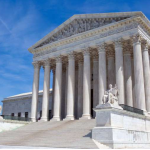Ending critical mineral dependence will require more than the recently announced deal with Ukraine.
After several months of negotiation, the United States and Ukraine finally signed a rare earth mineral deal. The agreement states that the United States will co-finance the development of “…minerals, hydrocarbons, and related infrastructure…” The deal does not call on Ukraine to reimburse the United States for aid it received during the Russian invasion, nor does it give the United States ownership of Ukrainian resources, subsoil, and infrastructure.
In addition, this new partnership will not hinder Ukraine’s aspirations of joining the European Union. Instead, the agreement established a joint investment fund, where profits from Ukrainian natural resources will be “fully invested in Ukraine.” The United States and Ukraine will manage this fund jointly. Finally, the Ukrainian government made a great effort to ensure that the agreement would not merely exploit its resources.
Senior officials from both countries celebrated the completed deal. In an official statement, Ukrainian First Deputy Prime Minister Yulia Svyrydenko said the minerals agreement provided “mutually beneficial conditions for both countries.”
Meanwhile, U.S. Secretary of the Treasury Scott Bessent stated that the newly signed mineral deal would form a “historic economic partnership” for the United States and Ukraine. Bessent added that the agreement signaled that America is “committed to a peace process centered on a free, sovereign, and prosperous Ukraine over the long term.”
It is no secret that President Donald Trump wanted to ensure the completion of this deal. After taking office this January, President Trump has prioritized the widening of U.S. access to rare earth minerals and undercutting its dependence on China.
To date, China has maintained a monopoly on rare earths. Chinese mines account for roughly two-thirds of the world’s rare earth ores. The United States comes in a distant second place, accounting for 12 percent of global rare earth production. Given this vast difference, the United States is attempting to close the gap.
The Ukraine agreement is only a first step. According to the Ukrainian government, this Eastern European country has “deposits of 22 of the 50 minerals listed as critical by the U.S.” Moreover, Ukraine can only boast an estimated 5 percent of the global reserves of rare earth elements.
As a result, the United States must explore additional options for its mineral portfolio. One such area could be Central Asia.
According to reports published by the Caspian Policy Center and the International Tax and Investment Center, Central Asia holds a significant portion of the world’s rare earth minerals. As the United States hopes to improve its access to rare earths, establishing closer ties with Kazakhstan, Kyrgyzstan, Tajikistan, Turkmenistan, and Uzbekistan is crucial.
But there are challenges. The Chinese currently have access to the region, seeking to build their monopoly on these resources. In addition, China is at an advantage over the United States as the Chinese are geographical neighbors with the Central Asian states, which makes accessing these resources logistically easier. Furthermore, China already has a significant trade relationship with the Central Asian states, where it is a large consumer of Central Asian goods and services. Russia also has a strong economic and trade relationship with Central Asia.
Despite these points, the political dynamic is shifting. Over the past few years, Central Asian countries have sought to decrease their economic and energy reliance on China and Russia. Instead, senior officials from the Central Asian states have prioritized meeting with their counterparts from the United States, the United Kingdom, and the European Union.
Establishing these relations will allow the Central Asian countries to diversify their economic and energy markets. In addition, reducing their dependency on a single entity will help them bolster their national, financial, and energy security.
The United States should take advantage of this growing relationship. In some cases, the groundwork is already there. In September 2023, President Joe Biden met with leaders from the Central Asian States to discuss growing relations between the United States and the region. During their discussions, the group highlighted the importance of critical minerals. The declaration stated that they could be used to help Central Asia bolster its energy security.
These discussions also forced the leaders of the Central Asian states to rethink the importance of rare earth minerals. Then, during the U.S.-Central Asia Trade Investment Framework Council in June 2024, representatives from the United States and Central Asia emphasized the need to “improve trade and integration.” Like Ukraine, Central Asia has an opportunity to embrace greater investments from the United States and other Western countries.
American investment could help these countries improve their energy infrastructure and take care of other development needs. In addition, like Ukraine, profits from these rare earth minerals should also be used to invest in the region. The Central Asian states should not be exploited for their resources. Finally, access to these rare earths would empower the United States and its position in the race for rare earth minerals.
Accessing Central Asia’s vast supply of rare earth minerals will take considerable time and effort. The Chinese and Russians currently have an advantage, given their proximity well-established economic and energy relationships with Central Asia.
However, that does not mean the United States should pass up such an opportunity. As the Central Asian states look to diversify their markets and establish stronger relationships with the West, Washington should look for new opportunities to cooperate with Astana, Tashkent, and the other regional capitals.
Accessing the region’s rare earth minerals would lead to greater economic opportunities and enhance energy security for the Central Asian states. It may also give the United States the much-needed boost it needs in the race for rare earth minerals.
About the Author: Mark Temnycky
Mark Temnycky is a nonresident fellow at the Atlantic Council’s Eurasia Center and an accredited freelance journalist covering Eurasian affairs.
Image: Joshua Sukoff / Shutterstock.com.


















